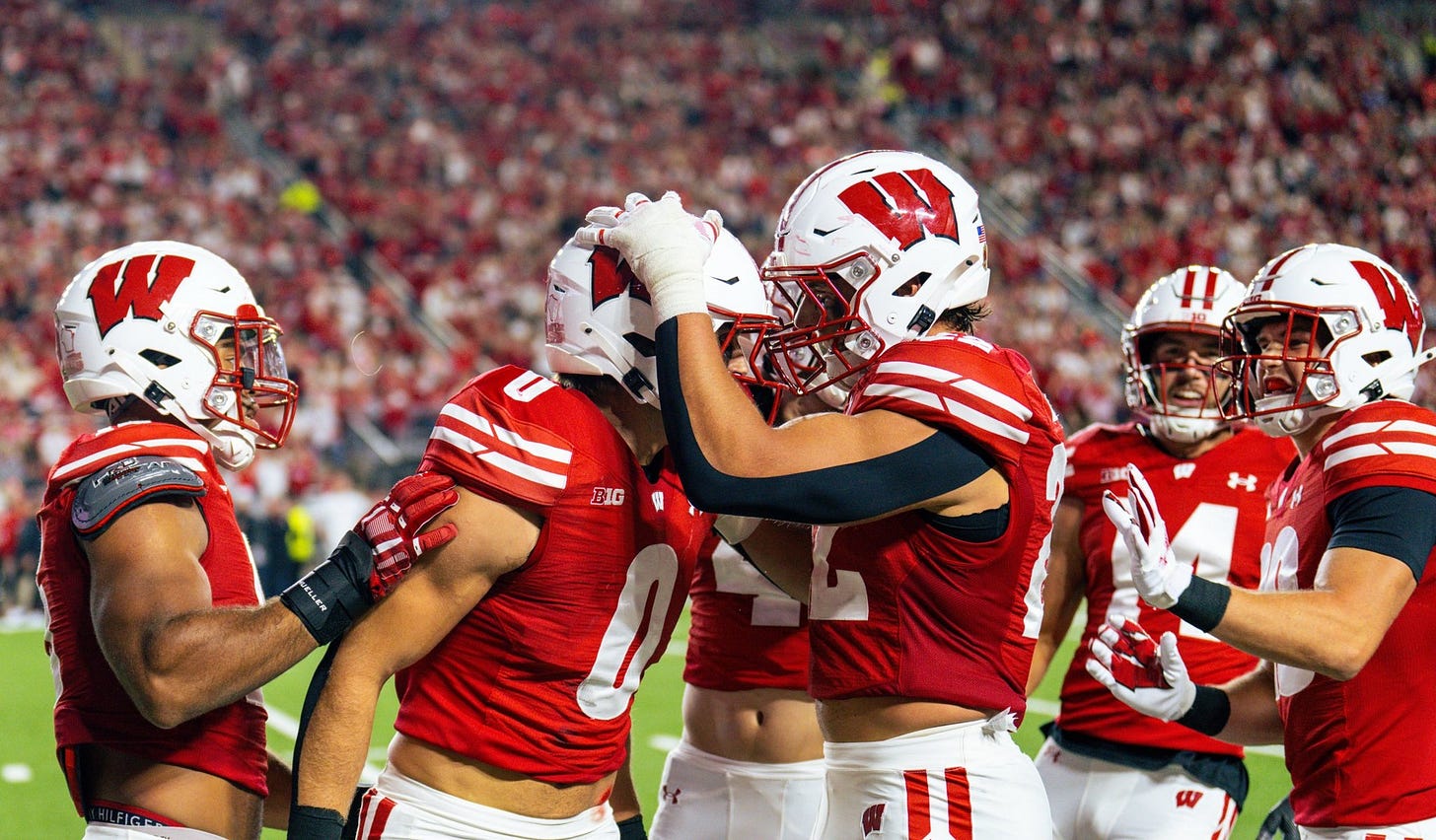Film room: Does Wisconsin football have a pass rush?
The Wisconsin Badgers' long-dormant pass rush may finally have life. BadgerNotes breaks down the film.
Let me put this as bluntly as I can. The Wisconsin football program's defense hasn’t recovered since Jim Leonhard left town.
Saturday’s win over Miami (OH), however, was a step in the right direction — the Badgers flew around the field and swarmed to the football, surrendering fewer than 120 total yards and rendering one of the Group of Five’s most talented quarterbacks completely ineffective.
This defensive resurgence was made possible by the awakening of Wisconsin’s pass-rush. After two-plus sleepy seasons of getting after the quarterback, the Badgers wreaked havoc in a way they hadn’t yet in the Mike Tressel era.
So, one can’t help but ask: Does Wisconsin finally have a pass rush again? What sparked this spike in pressure from the Badgers’ defense? Is it sustainable?
BadgerNotes dives into the film to find out.

Let’s first address the elephant in the room. Miami’s offensive line is comprised entirely of new starters. Miami also plays in the Mid-American Conference — a feisty and respectable league, but one that has a significant talent disparity when facing Big Ten opponents.
Still, look no further than Wisconsin’s season opener last year, also against a MAC opponent (Western Michigan), to see how far the Badgers have come. They allowed more than twice the amount of yards and trailed the Broncos into the 4th quarter. Outside of a single sack due to an outstanding individual effort from former defensive lineman Elijah Hills, the pass-rush was nonexistent.
Point being, tangible improvement is tangible improvement, even against a MAC team with a questionable offensive line.
Tressel’s defense finally played with some pride Thursday night. You get the sense the Badgers heard plenty about Wisconsin’s tepid pass rush and were rather tired of that narrative. There were multiple great individual performances getting after the quarterback, none more notable than Louisville transfer Mason Reiger.
Motor is one of a pass-rusher’s most important traits, and Reiger’s was absolutely humming on this play and throughout the whole game. He fights past two offensive linemen before tracking down the elusive Finn for a sack. Miami tries to double him here, but his inside move was simply too quick.
Sometimes, pass rush is as simple as individuals winning 1-on-1 matchups. Reiger won the majority of his reps, speeding up Finn’s process all night. But pressure didn’t just come from the edge; it came up the middle, as well.
Parker Petersen, another transfer (formerly of the Tulane Green Wave), made his presence felt from his spot at defensive tackle.
Watch No. 99 lined up as the 2i here. Though he doesn’t get the sack, he easily swims inside to create instant pressure, forcing Finn to deliver a high throw that his receiver has little to no chance to catch.
Petersen wasn’t the only defensive tackle to disrupt the pocket. Below, Brandon Lane (No. 95) walks the left guard back about seven yards and gets a hand on Finn, which forces him to bail out of the pocket and ultimately get tackled for no gain.
Wisconsin reliably won 1-on-1 reps both on the edge and up the middle all night. But more exciting than the consistency? The fact that these contributions came from up and down the front seven. It wasn’t just one Badger wreaking havoc; multiple linebackers and linemen had an outstanding evening winning their 1-on-1 matchups.
Reiger and Petersen, of course, are new to the program, both transferring to Wisconsin in the winter. This is Lane’s second year in Madison, but he was seldom used last season. That is to say, an influx of new talent certainly helped spark the pass rush.
But again, even more exciting than new players bringing added splash? Returning players stepping up their game.
Below, watch program stalwart Darryl Peterson do it all himself on this sack:
There’s a lot to break down here. First of all, Peterson — an outside linebacker — lines up with his hand in the dirt between the guard and the center. The 5th-year senior added about 12 pounds of weight this offseason to hit 260 pounds on the scale, and that size is already adding to his positional versatility.
Peterson is fast and violent with his hands on this rep, easily getting past the left guard to wrap up Finn. For someone who has struggled to consistently apply pressure throughout his career, he’s off to a strong start with a sack in game one.
Another returning outside linebacker made a big impact Thursday night: Sebastian Cheeks.
When used on the edge last fall, Cheeks was Wisconsin’s most disruptive pass-rusher based on pressure rate. He’s seemingly settled into a full-time role at outside linebacker, and his fingerprints were all over the game as well.
Lined up against the left tackle, Cheeks flies into the backfield, immediately forcing Finn to shuffle to the left. When he has to cut back to his right, Cheeks disengages from his block again and just misses the sack. No matter — his buddy Christian Alliegro is there to finish the play.
Below, Cheeks is lined up against the left tackle. He stunts inside, and while he doesn’t finish the play with a sack, his pressure forces an errant throw.
“Sometimes, that’s the most overrated stat in football,” head coach Luke Fickell said regarding sacks after the game Thursday night. “To me, it’s a little bit more about pressures and just getting guys off the spot.”
Cheeks doesn’t bring Finn down here; in fact, he doesn’t even touch him. But by penetrating into the backfield, he speeds up the quarterback’s process and forces him into an uncatchable throw.
Clearly, there were plenty of great individual efforts from Badgers’ pass-rushers in Week 1. But not all the pressure was created simply by players winning 1-on-1s.
Defensive coordinator Mike Tressel made sure to sprinkle in some blitzes to keep the heat cranked up:

